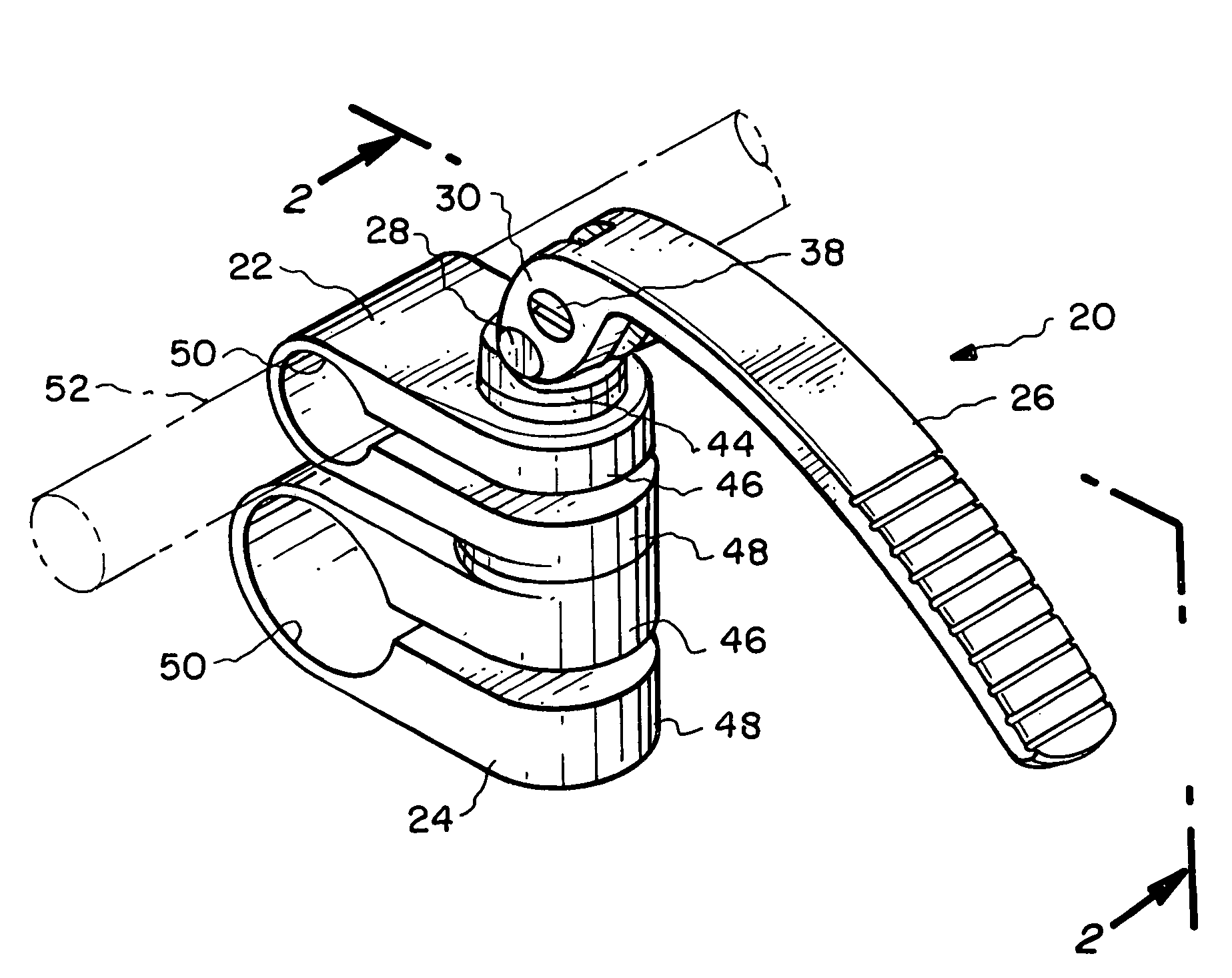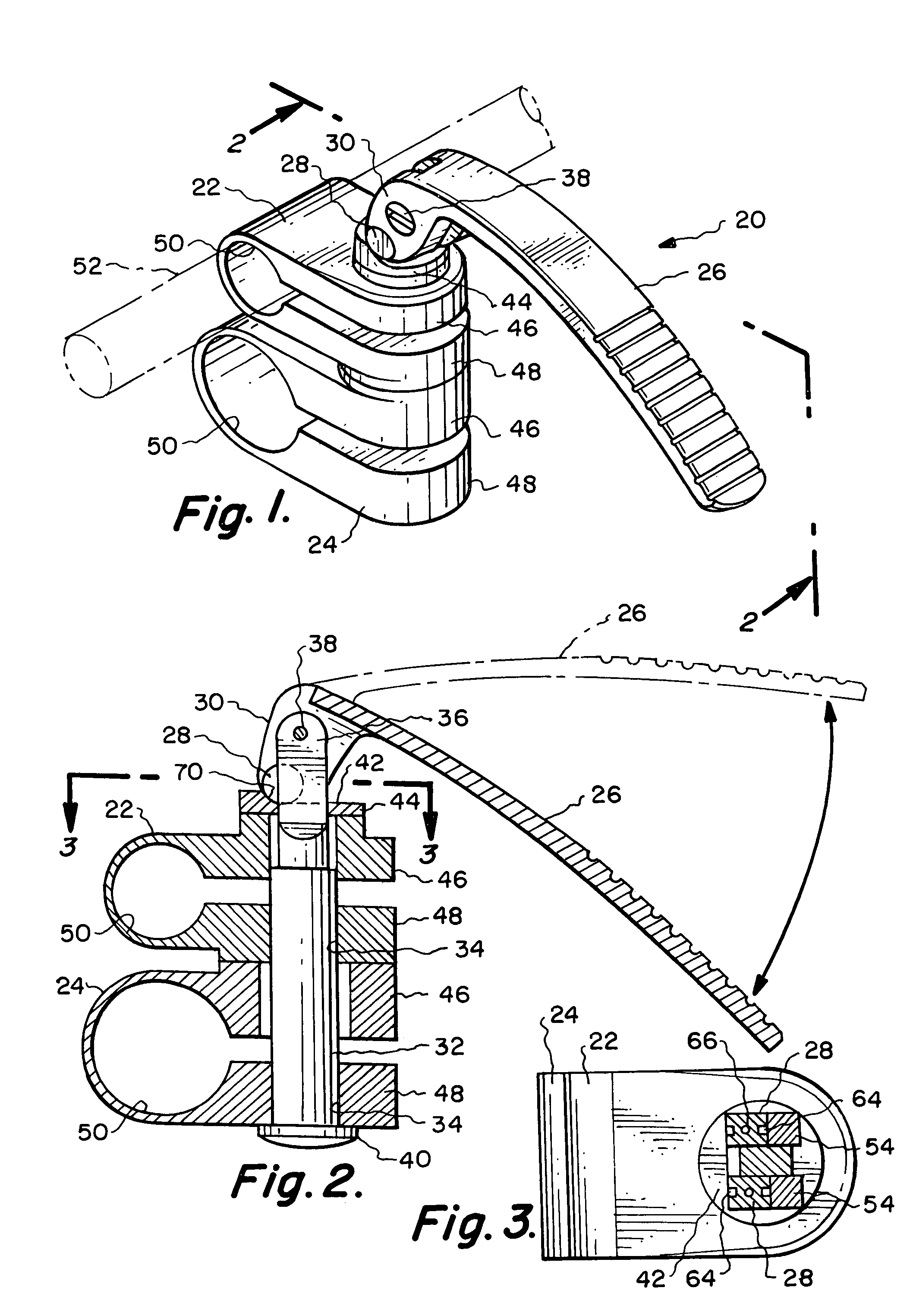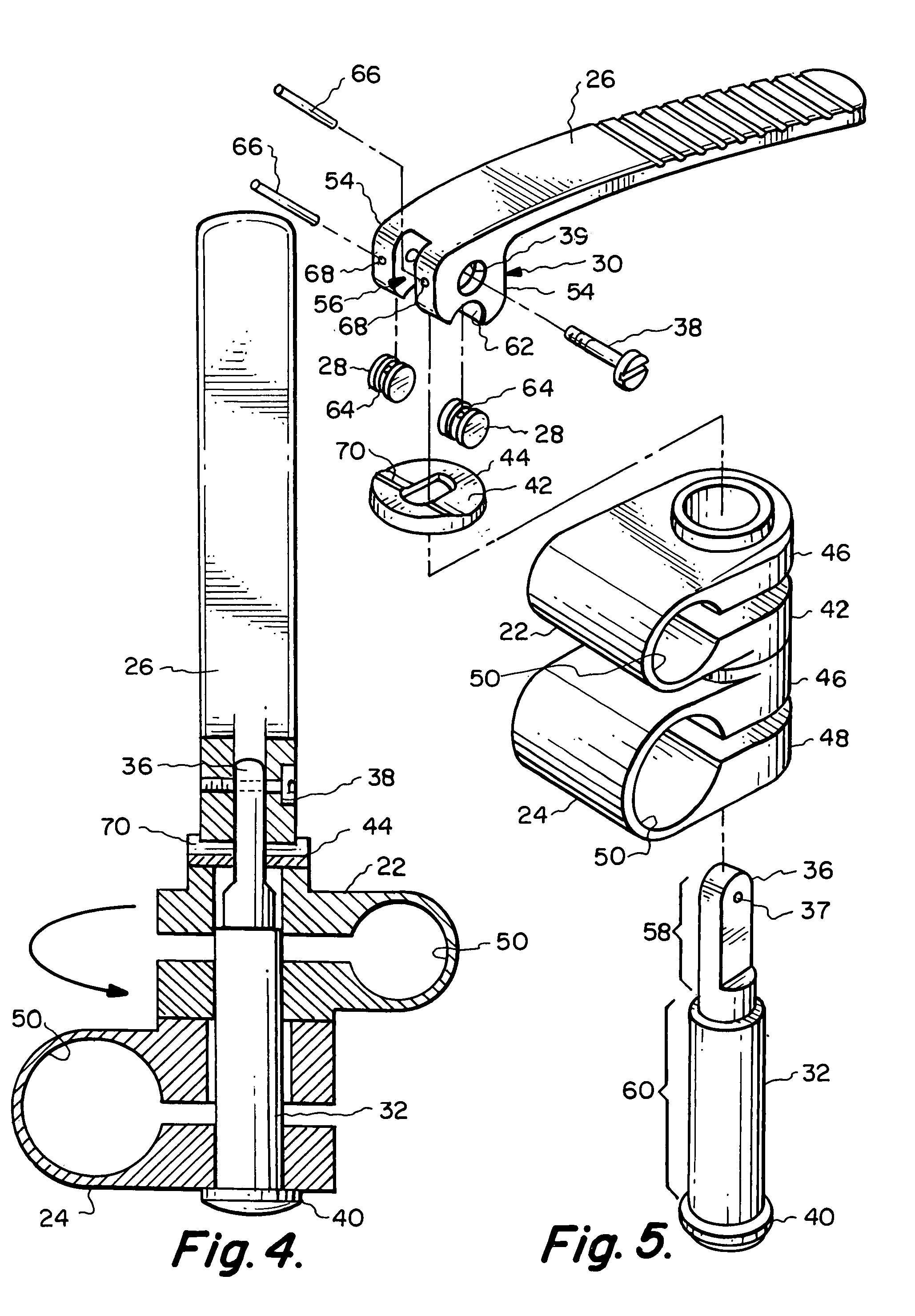Multi-position locking mechanisms for clamping assemblies
- Summary
- Abstract
- Description
- Claims
- Application Information
AI Technical Summary
Benefits of technology
Problems solved by technology
Method used
Image
Examples
Embodiment Construction
[0033]In one aspect, the present invention relates to locking mechanisms which can be used to deliver an actuating force that moves and locks, for example, a clamping device(s) between its clamped and unclamped positions. For the sake of illustration, the following exemplary embodiments of the invention are directed to clamping devices used in a surgical retraction system, although it should be understood that the present invention is applicable to other medical device applications, as well as non-medical applications.
[0034]Referring now to FIGS. 1-5, one particular embodiment of a multi-position locking mechanism 20 is shown. The locking mechanism 20 is used to impart an actuating or compressive force on a first clamping member 22 and a second clamping member 24 which are coupled to the locking mechanism 20. The combination of the locking mechanism 20 and the first clamping member 22 and second clamping member 24 creates a composite retractor clamp which is capable of being utilize...
PUM
 Login to View More
Login to View More Abstract
Description
Claims
Application Information
 Login to View More
Login to View More - R&D
- Intellectual Property
- Life Sciences
- Materials
- Tech Scout
- Unparalleled Data Quality
- Higher Quality Content
- 60% Fewer Hallucinations
Browse by: Latest US Patents, China's latest patents, Technical Efficacy Thesaurus, Application Domain, Technology Topic, Popular Technical Reports.
© 2025 PatSnap. All rights reserved.Legal|Privacy policy|Modern Slavery Act Transparency Statement|Sitemap|About US| Contact US: help@patsnap.com



